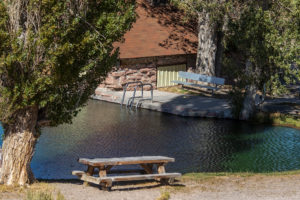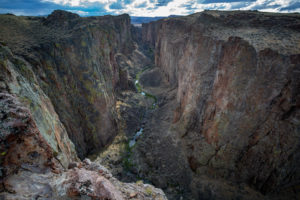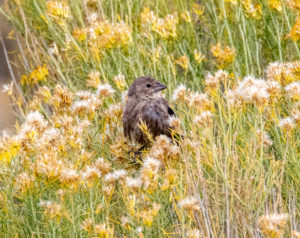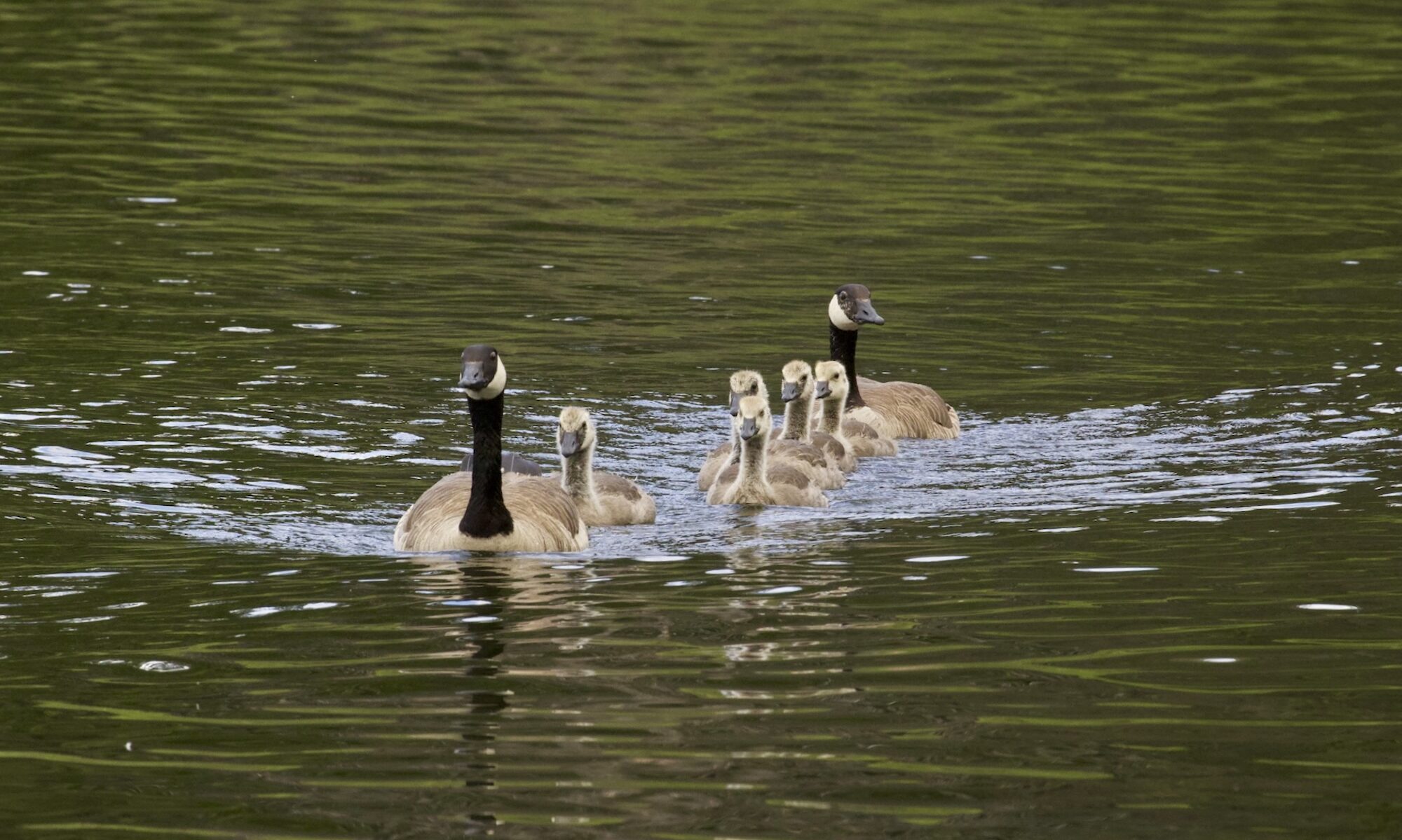
When describing travel destinations near Ashland, OR, I always include the 3 National Parks: Lassen Volcano NP, Crater Lake NP, and Jedediah Smith/Redwoods NP. Then there are the wildlife refuges in surrounding communities: Klamath basin, and Silver Lake. We’ve just discovered another outstanding destination for campers that ranks right up there with the best. Sheldon National Wildlife Refuge a couple miles off Highway 140 between Lakeview, OR, and Winnemucca, NV. Neither of those map locations deserve any credit for the grandeur of this massive refuge: 950 sq. miles and the second largest refuge in the US.
In addition to wildlife, the Sheldon Wildlife Refuge is famous for its Virgin Valley opals and is the largest source of the gemstones as far as commercial viability goes. We chose to lay over in the Virgin Valley Campground en-route to our autumnal trip to Great Basin NP. Pulling a travel trailer at 55 mph makes for long drives, and the 250 miles from Ashland exceeded our normal daylong journey. Since there’s not much camping available on this lonely stretch of highway, we’d researched our options prior to leaving and Sheldon was the logical layover for a number of reasons: fabulous birding (35+ species so far), seemingly endless drives on 4-wheel accessible roads to stunning overlooks (Thousand Creeks Canyon winds well beyond the reach of hikers), visits to miners pulling gemstone quality out of mines and happily sharing their stories and, right in the campground, a 90° warm bathing pool with tiny adapted fish and a shower/changing room that’s thoughtfully maintained by dedicated camp hosts. Oh, I forgot to mention that camping is free up to a maximum of 14 nights.
Earlier in our journey and after leaving Klamath Falls, we recalled a place introduced to us by our dear friend, Barbara Massey: the Sprague River Rest Area a couple miles east of Bly, OR. It’s easy to miss because of minimal signage—its single sign sneaks up on the left pretty quickly. After pulling off the highway, another sign indicated that due to switchbacks leading down into the river basin the access road is unsuitable to vehicles pulling trailers. So we parked up on top and walked the ¼ mile down to the rest area and confirmed that on subsequent visits our Escape 21 (and tiny pulling rig) would have little trouble maneuvering the road down. Good thing, because there were many birds and no other visitors in the spacious grounds that would serve as a great lunch spot.
Back on the road and fully fueled in Lakeview, we pulled into the Virgin Valley CG at dusk after a memorable drive through Warner Canyon (eastbound on Hwy. 140). The final couple hours were back-lit by a setting sun that illuminated the varied terrain with a gorgeous warmth. The campground is a couple miles off 140 that adds to its seclusion and offers spacious areas to free camp. There’s potable water (in addition to the pool), a source for filling up you water tanks, and several historical buildings dating back to the Civilian Conservation Corps in the 1940’s. Its relatively high elevation (5,500′), high desert vegetation, and foreboding rain clouds partnered up to entertain us with the first of several beautiful sunsets. The last was accompanied by a brief rain that, when finished, invited resident warblers and sparrows out for a refreshing visit to the fragrant sage bushes.
Set up and unhitched, we again relished having an adventure vehicle that wasn’t carrying our house on its back. Thirteen years and 400+ nights in our Four-Wheel Camper comprised a wealth of traveling adventures, and now having a smaller truck and leaving our “house” (our Escape 21 travel trailer) behind, we plied some roads unsuitable to using our bikes—especially due to the uneven terrain and sharp rocks that would wreck havoc with inadequate tires. On one journey right outside the Virgin Valley CG, we drove to the Thousand Creek Canyon we’d seen from a distance when first entering the refuge. The entire floor of the canyon was wet and boggy, so we hugged the steep canyon walls as far in as was safe and enjoyed the sun shining on our backs for a snack and wait & watch session.
Our friend Dick Ashford once commented on how many birds he’d spotted while taking a leak in the woods. A favorite spot up on Mt. Ashland has rewarded me many bird species while perched comfortably on my stool and just watching & waiting. So shortly after settling down in Thousand Creek Canyon, we heard unusual calls from apparently multiple birds up the canyon. Watch and wait. In the massive stillness across from us we spotted movement and Sooney identified seven healthy Chukars stealthily climbing the steep crags using mostly their strong legs and sheer determination. Echoing off the sheer canyon walls, their constant chattering filled us at first with curiosity and then pleasure as we watched them ascend the hundreds of feet to the rim and disappear.

After emerging from our canyon adventure, we chose another road heading east for a brief look at the interior. We later revisited this road for roughly 3 miles to an overlook into Thousand Creek Canyon 1,000′ below. While returning to the campground, we spotted some bird activity adjacent to the road and appreciated how easy it is to bird from our new truck. Sooney quickly ID’d the birds (there were 3-4 of ’em) as Sagebrush Sparrows, a “life” bird for both of us. At different times one or more posed unthreatened atop a sage bush. When startled, they dropped beneath the sage rather than fly away. Watch and wait. One shortly popped back up and they continued this pattern while moving slowly down a draw. Sooney joined me for a better look and there they were, up and down and continuing to pose curiously.

The next day Sooney and Laura, a neighbor who joined us on this leg of our journey, plotted out a road trip to the western region of the Refuge. Catnip Reservoir was our destination, and again we thanked our stars have switched to high-end Les Schwab All Terrain tires shortly after picking up our new truck. The reservoir was active with coots, grebes, and other water birds stuffing themselves near the tules that provided shelter along the shore. Several shrubs with Rose Hips mixed in were packed with a variety of warblers and sparrows. What also proved interesting was a forlorn Brown-headed Cowbird fledge that Sooney correctly identified and that we suspect was waiting for its flock (after most likely being kicked out of its host parent’s nest).
Next stop Lamoille Canyon and laying over at Thomas Campground in the Ruby Mountains. Meanwhile, here’s a list Sooney compiled during this leg of the journey: Orange-crowned Warbler 3, White-crowned Sparrow 6, Marsh Wren 2, Bittern, Orange-shafted Flicker, Song Sparrow 3, Barn Swallow, Yellow Warbler, Red-breasted Nuthatch 4, Yellow-rumped W, Warbling Vireo 4, Cooper’s Hawk 2, American Kestrel, Chuckar 6, Canyon Wren, Ravens 2, Sage Thrasher, Sagebrush Sparrow 4, M Dove 2, Brewers Blackbird 5, Robin, Coot, White-throated Swifts 8, Rock pigeons, Kingfisher, Cassin’s Vireo, Spotted Sandpiper, Killdeer 3, Ibis 4, Mallards, Shovelers, Canada Goose, Townsend Solitaire, Red-tail Hawk, Ruby-crowned Kinglet, N Harrier, Meadowlark 3, Sagebrush Sparrow 3, Say’s Phoebe, Marsh Wren, Orange crowned W, Common Yellowthroat, Yellow Warbler, Wigeon, N Shoveler, Cowbird, Ruddy, Coots, Eared Grebe
